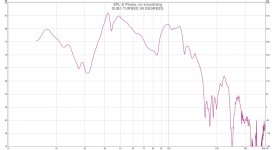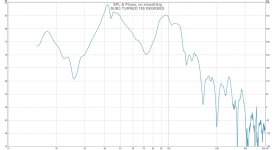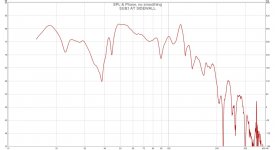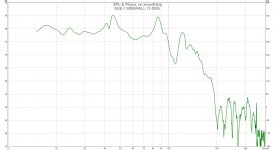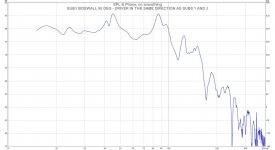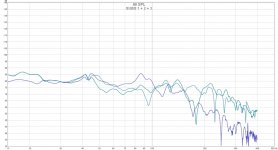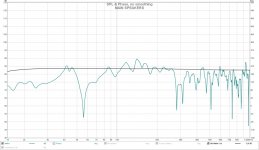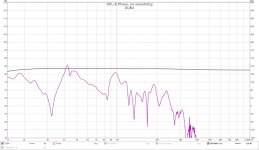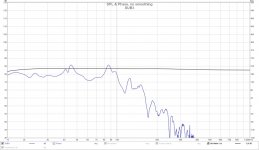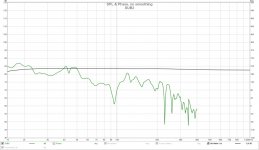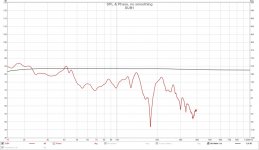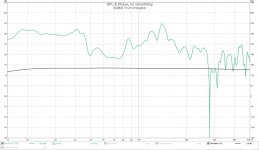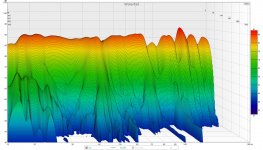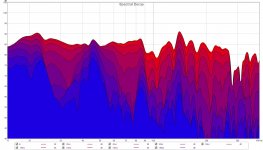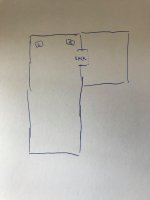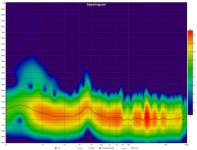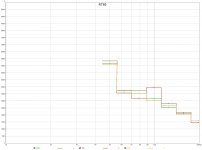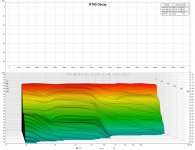Yes sir, noted, thank you. 
Here, a little experiment with Sub3. Interesting! Never see or read turning the sub could make such a difference.
Here, a little experiment with Sub3. Interesting! Never see or read turning the sub could make such a difference.
Attachments
Last edited:
SUB4 at different locations.
Looks like the last measurement is the best altough moving the sub4 didn't come out as good as sub3.
Looks like the last measurement is the best altough moving the sub4 didn't come out as good as sub3.
Attachments
-
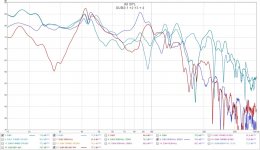 SUB4-ALL.jpg144.2 KB · Views: 46
SUB4-ALL.jpg144.2 KB · Views: 46 -
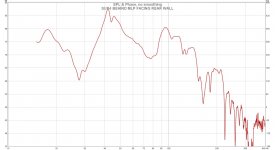 SUB4-9.jpg80.2 KB · Views: 44
SUB4-9.jpg80.2 KB · Views: 44 -
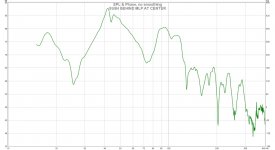 SUB4-8.jpg78 KB · Views: 35
SUB4-8.jpg78 KB · Views: 35 -
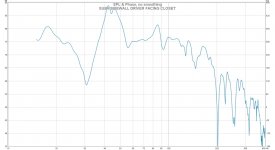 SUB4-7.jpg77.7 KB · Views: 40
SUB4-7.jpg77.7 KB · Views: 40 -
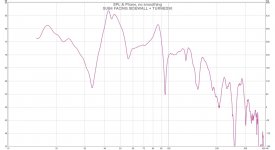 SUB4-6.jpg77.8 KB · Views: 33
SUB4-6.jpg77.8 KB · Views: 33 -
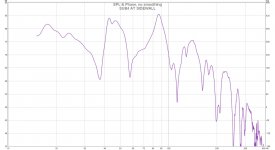 SUB4-5.jpg80.1 KB · Views: 41
SUB4-5.jpg80.1 KB · Views: 41 -
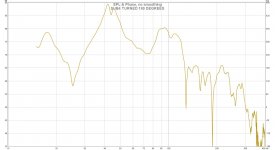 SUB4-4.jpg75.7 KB · Views: 33
SUB4-4.jpg75.7 KB · Views: 33 -
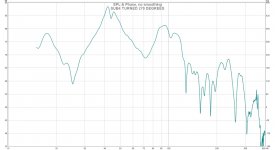 SUB4-3.jpg78.1 KB · Views: 45
SUB4-3.jpg78.1 KB · Views: 45 -
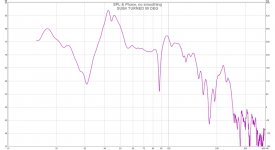 SUB4-1.jpg79.6 KB · Views: 43
SUB4-1.jpg79.6 KB · Views: 43 -
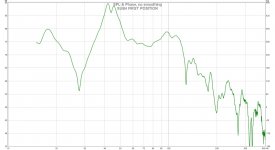 SUB4-0.jpg77.4 KB · Views: 61
SUB4-0.jpg77.4 KB · Views: 61
Last edited:
OK, here are now 5 plots:
Each sub separately + mains.
No filters.
I think this does not look good.
Dip from 50-70 Hz is giving me troubles.
I'm afraid different sub placement might be in order but I'm running out of options.
Each sub separately + mains.
No filters.
I think this does not look good.
Dip from 50-70 Hz is giving me troubles.
I'm afraid different sub placement might be in order but I'm running out of options.
Attachments
I figure everybody can benefit from reading Matthew’s excellent articles (comparisons between multisub 'mono' are also made, but read the fine details):
Spaciousness of Bass: Is Stereo Bass a Myth or Reality? | Audioholics
Best,
Anand.
Spaciousness of Bass: Is Stereo Bass a Myth or Reality? | Audioholics
Best,
Anand.
Last edited:
Earl,
Here are subs 3+2+1 + mains.
Perhaps a stupid idea: would it make sense to EQ 20-50 and Hz area and then raise the gain?
poseidonsvoice,
Interesting. I agree with final thoughts, especially with the Geddes principle where main speakers are also stereo bass sources.
Here are subs 3+2+1 + mains.
Perhaps a stupid idea: would it make sense to EQ 20-50 and Hz area and then raise the gain?
poseidonsvoice,
Interesting. I agree with final thoughts, especially with the Geddes principle where main speakers are also stereo bass sources.
Attachments
Last edited:
Thank you, Earl.
It sure is worth trying.
Before you replied I did some more work. Added one more sub in the equasion.
Turned out I got a decent FR but awful ringing at 40-60 Hz area (up to 600 ms).
Do you think sub positions are crucial in your method? I know you said you placed where you had space.
I'm asking this because couple of years ago I tried other sub positions which resulted in slightly worse FR but better decay times. That could mean placement plays an important role in the integration process. Does that makes any sense?
It sure is worth trying.
Before you replied I did some more work. Added one more sub in the equasion.
Turned out I got a decent FR but awful ringing at 40-60 Hz area (up to 600 ms).
Do you think sub positions are crucial in your method? I know you said you placed where you had space.
I'm asking this because couple of years ago I tried other sub positions which resulted in slightly worse FR but better decay times. That could mean placement plays an important role in the integration process. Does that makes any sense?
I figure everybody can benefit from reading Matthew’s excellent articles (comparisons between multisub 'mono' are also made, but read the fine details):
Spaciousness of Bass: Is Stereo Bass a Myth or Reality? | Audioholics
Best,
Anand.
I like the idea of "spacious bass" or "bass envelopment" rather than "stereo bass". Stereo is not what gives bass its perception. I agree with Greisinger that it is a decorrelation of the bass that sounds best. I found this years ago when I looked at the differences between bass in a small room and bass in a large room.
What stood out was that in a large room the bass at the ears is decorrelated by the reverberation. In a small room this is not the case. I have always said that decorrelating multiple subs would be the best approach and did some experiments that showed this. But decorrelation is hard to do.
This is why I do not time-align the subs, because if they are not time aligned then they will be less correlated. One might even play with increasing the time offset of the subs. This could be effective.
But the concept of "stereo bass" is not very enlightening.
Turned out I got a decent FR but awful ringing at 40-60 Hz area (up to 600 ms).
600 ms at 40 Hz.!? Seems implausible to me. 40 Hz will leak out of every small opening in the room. Is it a concrete bunker? How do you even measure the decay time?
But setting phase and polarity is practically the same thing, correct? Delay is slightly more accurate as it’s not frequency dependant.This is why I do not time-align the subs, because if they are not time aligned then they will be less correlated. One might even play with increasing the time offset of the subs. This could be effective.
It’s true. @poseidonsvoice saw waterfall and decay plots and helped me with the REW settings.600 ms at 40 Hz.!? Seems implausible to me. 40 Hz will leak out of every small opening in the room. Is it a concrete bunker? How do you even measure the decay time?
Concrete walls, unfortunately.
What’s your theory on subs placement? Could some position ring more than the others?
I gave up on bandpass and ported years ago.
You had promoted bandpass (4th order), why you gave up on them?
I think of things this way: "Phase" is relevant if it is < 360, but if there are many wraps of the phase, then only "delay" makes sense since there are many phases.But setting phase and polarity is practically the same thing, correct? Delay is slightly more accurate as it’s not frequency dependant.
Polarity is different because it is a constant for all frequencies, which neither phase nor delay will do.
So yes, they are all similar but each has a slightly different aspect that warrants its use over the others.
It’s true. @poseidonsvoice saw waterfall and decay plots and helped me with the REW settings.
Concrete walls, unfortunately.
What’s your theory on subs placement? Could some position ring more than the others?
Position should have nothing to do with ringing. The location of the source only affects the amplitude at which it resonants, but cannot affect its Q. Hence, no, position will not affect decay time.
I'm still unclear on how you determiner decay of a mode. From a waterfall?
You had promoted bandpass (4th order), why you gave up on them?
I think that the bandpass limited bandwidth can be less than desirable as we have seen here. There will be times that it works, but others where it won't.
My understanding is that all of them are (and can be) used for sub integration. Phase controls are adjustments of an all pass filter that alters its group delay. The difference is phase control varies with frequency.
Why am I suspecting positions? I don't know much about acoustics but I'm guessing if there are room modes and if a bass source is placed in a proper place it could help with the mode. Probably that's why you are placing one sub in the corner?
Yes, ringing is visible on the waterfall. Or decay plot. Please see the picture and observe the 40-60 Hz area. That is probably the cause for lousy bass.
Why am I suspecting positions? I don't know much about acoustics but I'm guessing if there are room modes and if a bass source is placed in a proper place it could help with the mode. Probably that's why you are placing one sub in the corner?
Yes, ringing is visible on the waterfall. Or decay plot. Please see the picture and observe the 40-60 Hz area. That is probably the cause for lousy bass.
Attachments
Last edited:
I'd want to see a cut through the 20 Hz line. I'll bet that there is a rapid decay and then a rise. This means coupling of this room to some other place as the wave energy comes back into the source room.
I should think this a good thing at LFs (this may also not be true, it would need to be tested psychoacoustically) because it has a real mixing effect of the total sound wave directions etc. This coupling is now decorrelated from the original sound source. Good thing it appears only in the range up to 30 Hz. Two similar sized rooms weakly couple together might do this.
But, back to the point, the initial decay is what I am talking about. The later coupled sound arrival would very much depend on the sources location relative to the major coupling between the rooms.
PS. All the other resonances in your plot look normal - straight decays.
I should think this a good thing at LFs (this may also not be true, it would need to be tested psychoacoustically) because it has a real mixing effect of the total sound wave directions etc. This coupling is now decorrelated from the original sound source. Good thing it appears only in the range up to 30 Hz. Two similar sized rooms weakly couple together might do this.
But, back to the point, the initial decay is what I am talking about. The later coupled sound arrival would very much depend on the sources location relative to the major coupling between the rooms.
PS. All the other resonances in your plot look normal - straight decays.
Sorry, Earl, you lost me. 
I would be happy to provide any additional information.
What did you mean by a cut through the 20 Hz line?
There are no similar rooms nearby. Can two rooms get coupled even with solid concrete walls? What to do in such cases?
All the resonances look good? Well, they are (above 60 Hz), but the sound is still weird. I know bass can mess up higher tones as well,
I suppose the one below 30 Hz isn't disturbing? I think I read that somewhere ...
Is this plot helpful?
I would be happy to provide any additional information.
What did you mean by a cut through the 20 Hz line?
There are no similar rooms nearby. Can two rooms get coupled even with solid concrete walls? What to do in such cases?
All the resonances look good? Well, they are (above 60 Hz), but the sound is still weird. I know bass can mess up higher tones as well,
I suppose the one below 30 Hz isn't disturbing? I think I read that somewhere ...
Is this plot helpful?
Attachments
Those are all normal and those rates of change all indicat a T60 (as if that term applies here) of about 250-300 ms. I surely see a lot of LF energy coming back into your room from somewhere.
By "cut" I mean a plot of SPL vs. time at 30 Hz. It will fall to about 250 ms. then some other energy arrives pushing up the level and then falls again. This energy is probably 15 dB down from the direct sound, so its not large, but at these long decay times you can see these effects. I would guess some kind of giant Helmholtz resonator - f0 in the 15 - 30 Hz range - is coupled to your room. It's likely low damping. But heck, at these frequencies I just would give it much consideration.
By "cut" I mean a plot of SPL vs. time at 30 Hz. It will fall to about 250 ms. then some other energy arrives pushing up the level and then falls again. This energy is probably 15 dB down from the direct sound, so its not large, but at these long decay times you can see these effects. I would guess some kind of giant Helmholtz resonator - f0 in the 15 - 30 Hz range - is coupled to your room. It's likely low damping. But heck, at these frequencies I just would give it much consideration.
Could this mean a panel has soaked up the energy and is re-radiating it, or that it actually left the room and returned?I surely see a lot of LF energy coming back into your room from somewhere.
Ok, I'm still not sure what do you mean so I prepared a couple of plots.
Now that you mentioned coupling. I have a rack hole that can be opened in the other room (much smaller, but same width). It is covered by a wooden doors on the back.
I thought this might be a problem so I tried covering it with absorbers (on both sides). No particular change.
A while ago someone else indicated this might by a resonance from the outside but I didn't take it seriously. Now there are two of you it makes me wonder what can be done here. How to check these things? And what is the difference between a room mode or a "coupled resonance"?
Now that you mentioned coupling. I have a rack hole that can be opened in the other room (much smaller, but same width). It is covered by a wooden doors on the back.
I thought this might be a problem so I tried covering it with absorbers (on both sides). No particular change.
A while ago someone else indicated this might by a resonance from the outside but I didn't take it seriously. Now there are two of you it makes me wonder what can be done here. How to check these things? And what is the difference between a room mode or a "coupled resonance"?
Attachments
- Home
- Loudspeakers
- Subwoofers
- Multiple Small Subs - Geddes Approach
